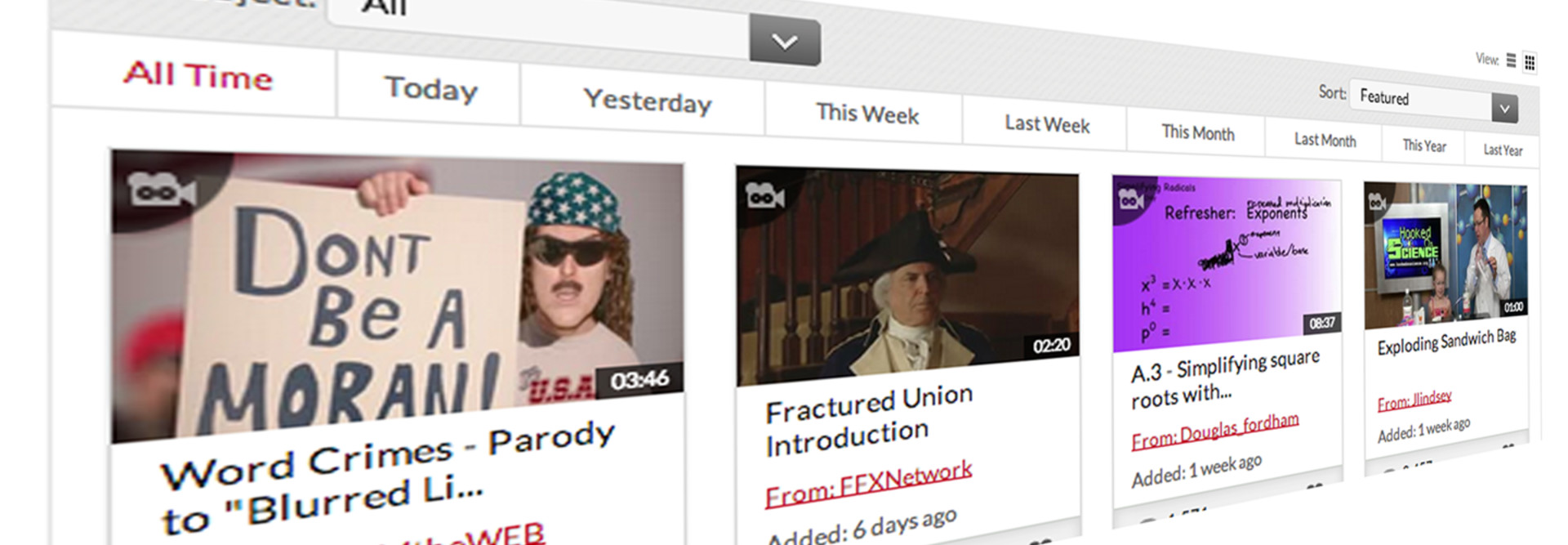Q&A: TeacherTube Gives Educators Their Own Video Platform
Move over, television. More than 100 million Internet users are watching online videos every day.
Of course, the vast majority of users are orbiting video-sharing giants like YouTube and Vimeo. But neither of those sites caters specifically to educators.
TeacherTube is helping to fill that gap. Through hundreds of short videos, teachers show that learning can be fun. The biggest video hit on the site is a rap music video featuring the U.S. presidents, boasting more than 140 million views.
The blog and video-sharing site was featured as one of EdTech’s Must-Read K–12 IT Blogs. We spoke with Jason Smith, TeacherTube’s CEO, about the idea behind the site’s origins and where the format is headed in education.
EDTECH: What sets your blog apart from others?
SMITH: TeacherTube’s blog promotes educational videos to our community members and provides learning opportunities on how to better use technology in the classroom.
EDTECH: What made you want to create the blog?
SMITH: We believe it is important to stay in engaged with our community members, and having our TeacherTube blog helps us achieve this goal.
EDTECH: YouTube has become an unstoppable force on the Internet. Could you talk about the short video format, and how it makes sense for education?
SMITH: Without question, we were inspired by YouTube. The ability to easily create, engage, collaborate and share videos in an online community was and is an exciting concept. This is why YouTube has over a billion unique users per month. However, the vast majority of the content on YouTube is not for educational purposes. In fact, many schools block YouTube, based on inappropriate videos and comments.
In 2007, we knew that digital content would start taking over educational resources. The idea that a teacher could connect a video to better emphasize or engage her students would be important. As well, once a teacher had created his video and uploaded it to TeacherTube, his students would have access to their teacher teaching that concept 24/7, and this would have a positive impact on student learning.
Therefore, we created TeacherTube for teachers to have a safe, free, online educational resource community for teachers.
EDTECH: How do you curate your selections? Who are some of the most prolific educational video creators?
SMITH: Our content is curated mostly through our community members by appropriateness, subject and learning standards. However, our staff and partners help with this process at a much lower level.
Our most prolific video creators are the American Institute for History Education, Texas Instruments, Howdini and, most recently, Jason Lindsey from Hooked on Science. During the school year, it’s not unusual for Lindsey to have well over a thousand views shortly after uploading his videos.
EDTECH: What's one recent technological innovation you think educators take for granted?
SMITH: The obvious answer for me is mobile technology. Take, for example, smartphones. Most 6th- to 12th-grade students have a smartphone. For those students that don’t have smartphones, schools could easily have a smartphone drive to [obtain] enough smartphones for every student. Between my wife and me, we have five smartphones. We use two of them, which means my family has three wireless educational resources ready for an economically disadvantaged student to use. I’m confident that we are not the only family with multiple smartphones stored in a kitchen drawer.
I believe that smartphones and/or tablets should take the place of all paper assignments at the secondary level. Think about it: Let’s say a student is reading their U.S. History textbook from their smartphone. The student is reading about the Emancipation Proclamation. As the student is reading, she sees a hypertext link. She clicks the link, and a TeacherTube video plays Abraham Lincoln (an actor, of course) reading the Emancipation Proclamation from the American Institute for History Education. History just came to life for that student.
That level of engagement just moved the student’s learning to long-term memory.









